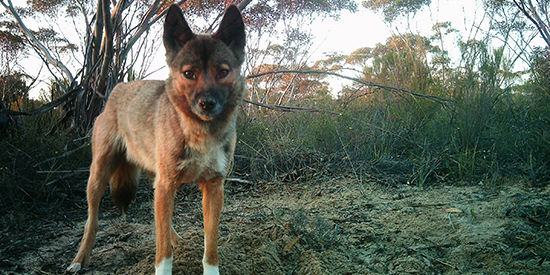Deakin study shows fire is dingo's friend but fox's foe
Media releaseFire and dingoes could be the dynamic duo that hold the key to helping stop destructive foxes in Victoria's Big Desert region, according to new Deakin University research.
The study, published today in the Journal of Applied Ecology, investigated how fire management could help control feral pests such as foxes in a semi-arid environment.
Deakin ecologist Associate Professor Euan Ritchie said foxes were found less in areas where dingoes were more common, possibly due to an increased predation risk, and this new research showed dingoes preferred recently burned areas.
"We believe this is because the open terrain of recently burned landscapes provides better conditions for dingoes to pursue and hunt kangaroos, which are attracted to these areas as they can graze on the nutritious vegetation that regrows following fire," Associate Professor Ritchie said.
"So while foxes themselves are not directly affected by fire history, a negative association between dingoes and foxes means that fire has an indirect impact on foxes."
Associate Professor Ritchie and Deakin Honours student Billy Geary worked with colleagues at Deakin University and Charles Sturt University to set up camera traps monitoring animal populations in 21 different parts of the Big Desert region of north-west Victoria.
As well as observing foxes and dingoes, the researchers also focussed on the Mitchell's hopping mouse and silky mouse, both threatened by foxes.
Associate Professor Ritchie said the work showed fire- and predator-management practices should be integrated and enacted together to improve conservation and invasive species management goals.
"This shows that disturbance regimes - for example fires that occur via frequent management - have the capacity to shape interactions between native and invasive predators. Carefully managed fires could help increase dingo activity in landscapes, and in turn aid the suppression of foxes.
"We now want to investigate if manipulating fire regimes through fire management could help protect native prey - like small mammals, reptiles and birds - from the negative impact of foxes, as well as from other predators like feral cats, and herbivores such as kangaroos and feral goats."

